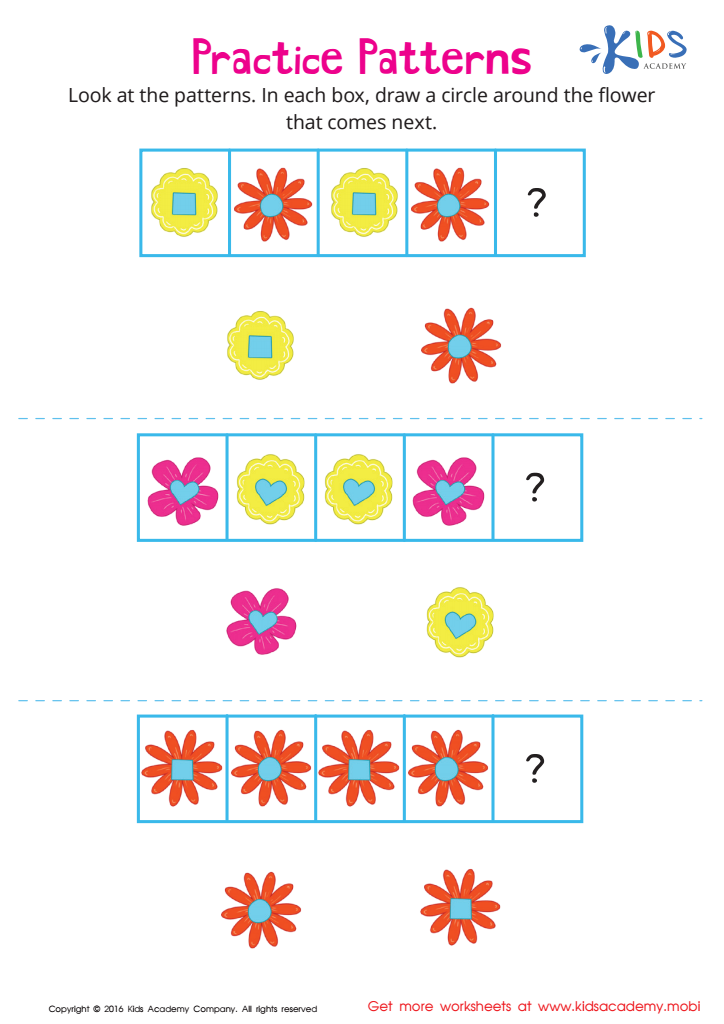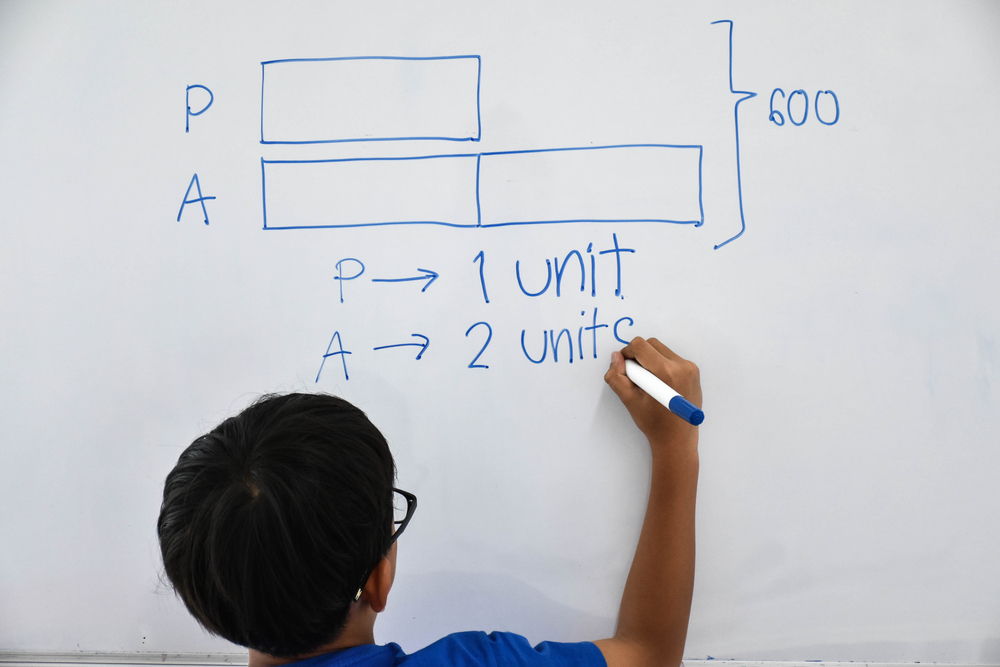Pattern recognition Patterns Worksheets for Ages 3-8
5 filtered results
-
From - To
Unlock your child's potential with our engaging pattern recognition worksheets designed for ages 3-8! These interactive materials help young learners develop essential cognitive skills while having fun. Children will explore different types of patterns, including colors, shapes, and numbers, fostering critical thinking and problem-solving abilities. Our worksheets are carefully crafted to cater to various developmental stages, ensuring a perfect fit for your child’s learning journey. With colorful illustrations and diverse activities, these printables promote essential early math skills and boost confidence. Explore the world of patterns and watch your child thrive as they enhance their learning experience today!
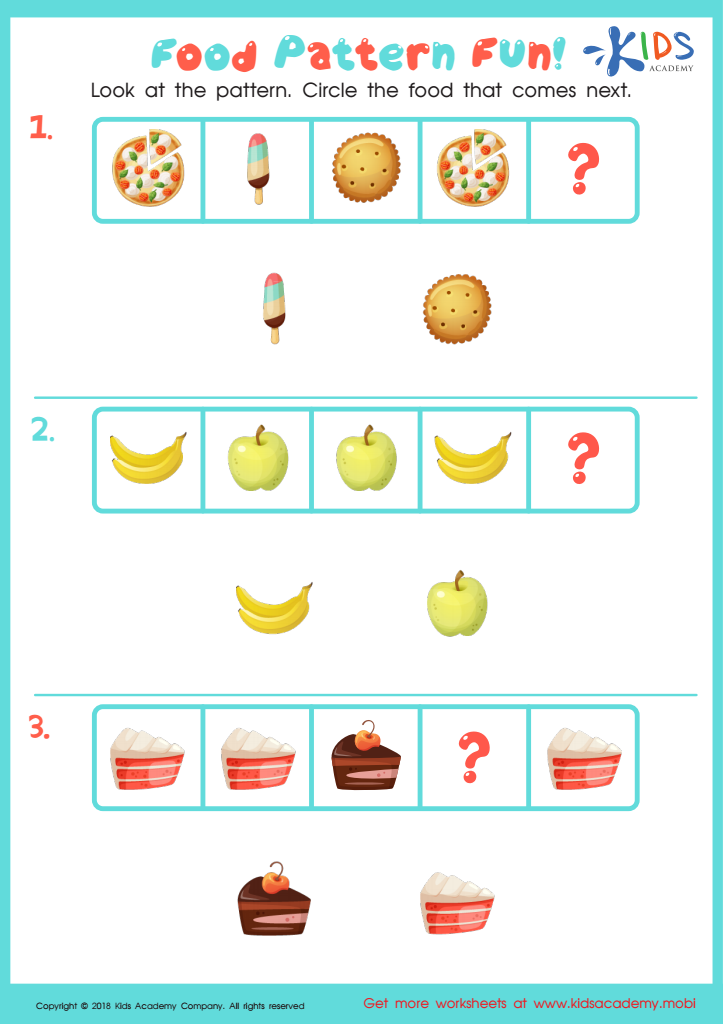

Food Pattern Fun Worksheet
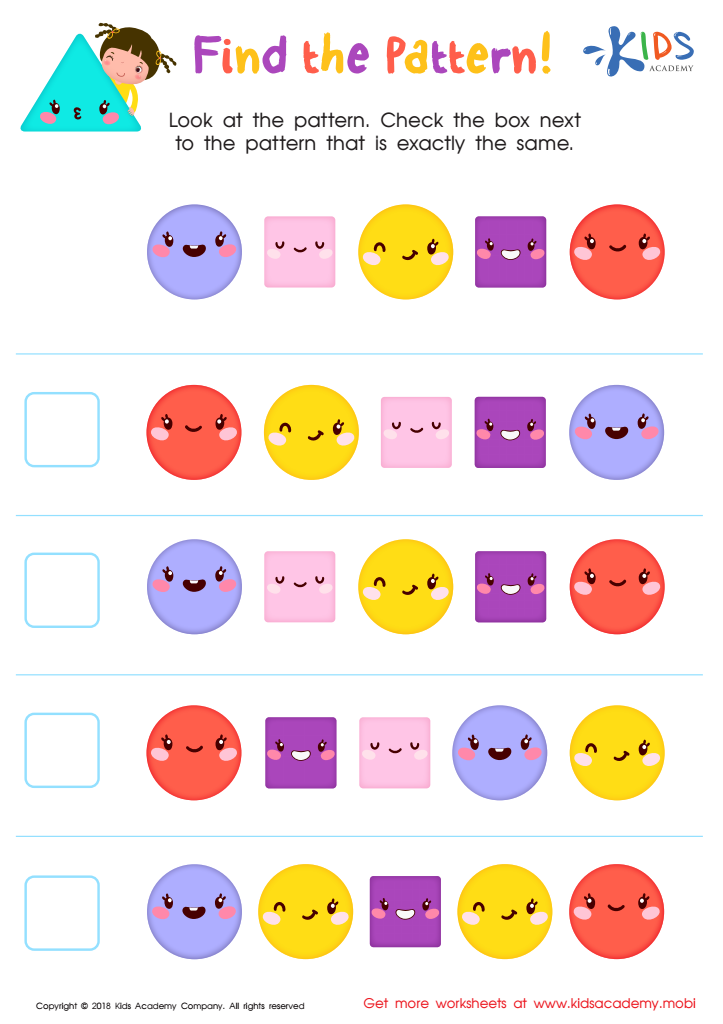

Find the Pattern Worksheet
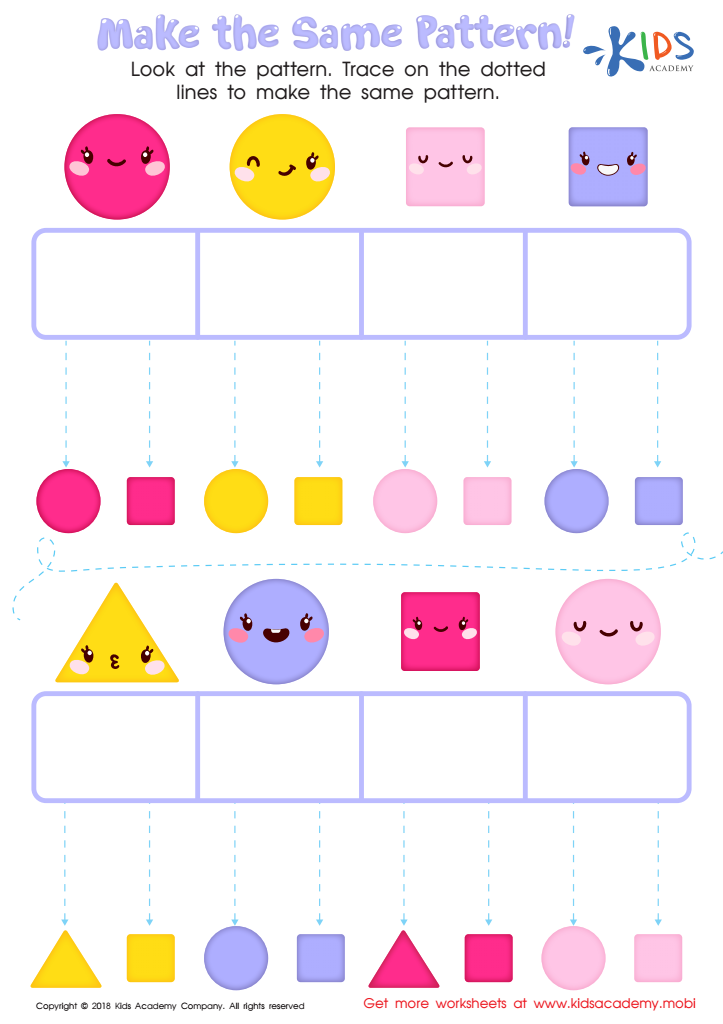

Make the Same Pattern Worksheet
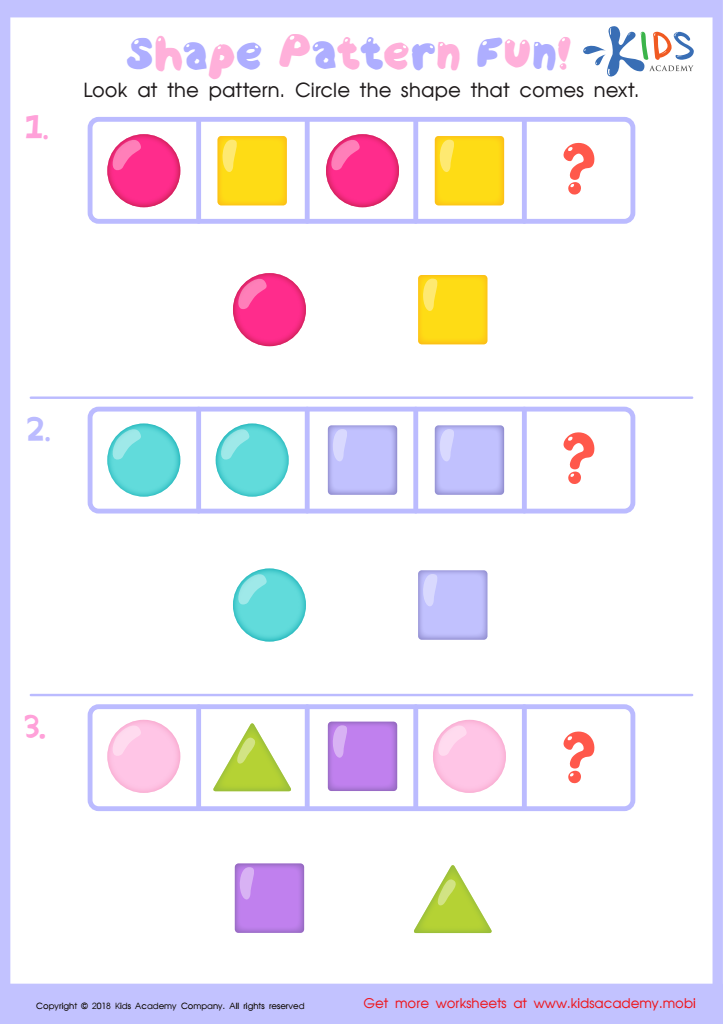

Shape Pattern Fun Worksheet
Pattern recognition is a fundamental cognitive skill crucial for children's development, especially for those aged 3-8. This age group is a pivotal time for cognitive growth and learning foundational concepts in mathematics, language, and science. When parents and teachers focus on pattern recognition, they enhance children’s ability to identify relationships and predict outcomes, which is essential for problem-solving and critical thinking.
Engaging children in activities that promote pattern recognition—such as sorting objects, creating rhythmic sequences, or completing puzzles—strengthens their observational skills and attention to detail. This involvement not only boosts their mathematical abilities but also enhances their language skills as they learn to describe the attributes and sequences of different patterns.
Moreover, early exposure to patterns helps create neural pathways that support future learning. For instance, recognizing numerical patterns lays the groundwork for later arithmetic concepts. By empowering young learners to recognize and create patterns, parents and teachers cultivate a sense of curiosity and exploration. This foundation fosters confidence in learning, making it easier for children to adapt to more complex concepts in later educational stages. Ultimately, incorporating pattern recognition into learning provides a well-rounded approach to education, essential for developing adept, analytical thinkers.
 Assign to My Students
Assign to My Students

